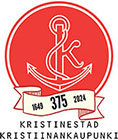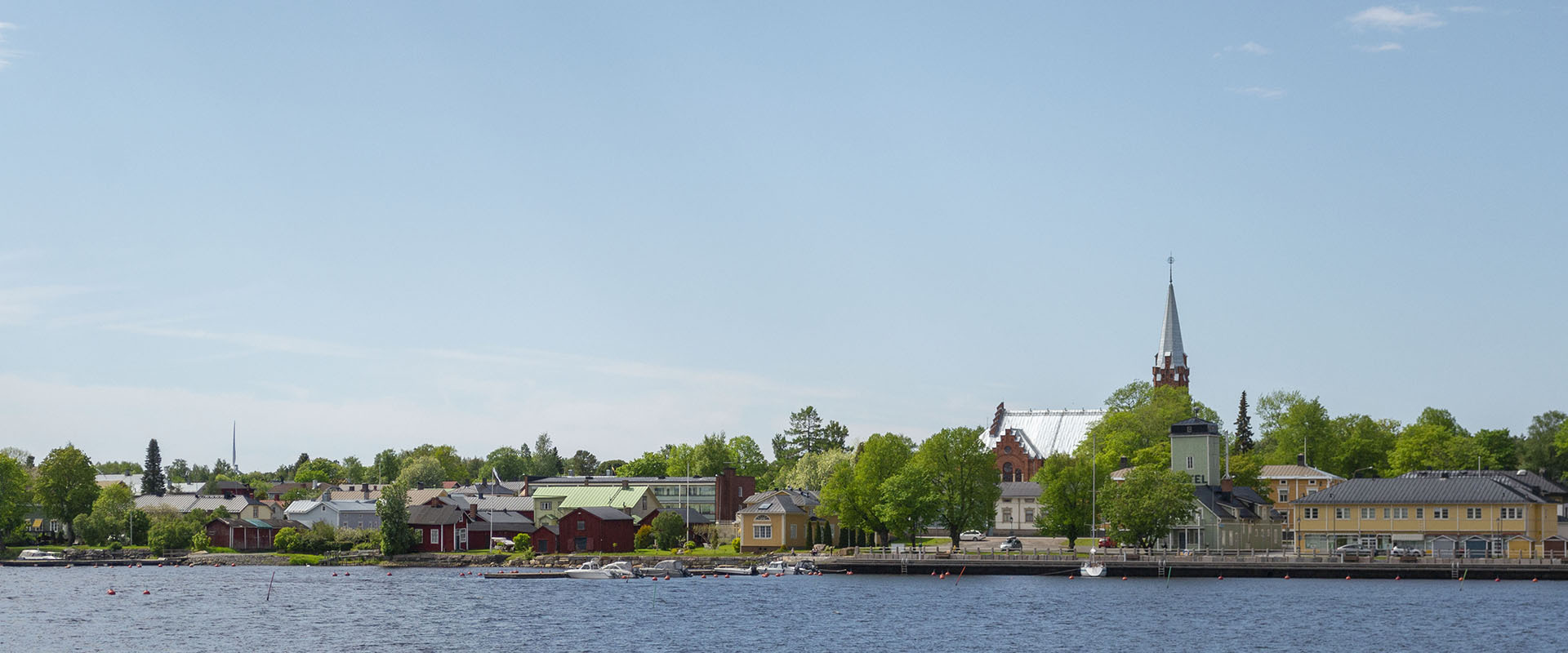Information about the city
Kristinestad is situated on the west coast of Finland by the Main road 8 about 100 km from Vasa, Pori and Seinäjoki. The surrounding nature, especially the sea, is an important part of our identity.
You can live a good life near the sea in Kristinestad which has many old wooden houses and rural populations centres. The main basic service is easily accessible, and you can get healthy and locally grown food from farmers in the countryside of Kristinestad.
The community is strong in this small city. In everyday life you can learn Finland’s other national language in your exercise group, village house, at the sandbox or for example at the fish counter in the store. The children get natural language baths in daycare yard and youngsters meet each other in their leisure activities.
The city has many attraction factors such as good education services and other basic service including health campus, extensive leisure services and a lively association activities. The goal is well-being and happy residents.
The Cittaslow membership granted in 2011 was a recognition for the city's spirit and quality of life. The Cittaslow philosophy emphasises a full life, without stress and hustle with respect for the local and sustainable solutions. It is often possible to walk or cycle to work. If you travel by car to your workplace, you don't have to drive in a rush and it is always easy to find a parking place.
There are many different housing opportunities in Kristinestad. You can build your own house in a historic urban environment, a new residential area, an active village or in the middle of the peace of nature.
Kristinestad provides a safe growing environment for children. Everyone knows each other, and community and social inclusiveness are highly valued. The day care is of high quality. All day care groups are bilingual. A new day care centre in the city centre has been in operation since 2020. After primary and middle school, children can continue their studies at high school in Kristinestad.
Here you can enjoy beautiful sea and archipelago landscapes and also lakes, river valleys, diverse forests and even mountain landscapes! The five mountain ridges of Bötombergen rise above the otherwise flat Ostrobothnia.
In Kristinestad, old and new meet in a constructive way
Kristinestad was founded in 1649 by Per Brahe, whose time as Governor-General of Finland (1637–40 and 1648–54) is called the Count's time. Per Brahe founded the town in a suitable place to strengthen trading around the Gulf of Bothnia. The town was named either after Brahe's consort Kristina Stenbock or Queen Kristina who was the queen of Sweden at that time – we don’t know which of them. Queen Kristina was Gustav II Adolf's daughter who renounced the throne and converted to Catholicism. She is buried in St. Peter's Basilica in Rome.
Kristinestad's historic centre with its wooden houses is still a unique place to live where many over a hundred years old houses still are taken care of and kept in good condition. Kristinestad is one of the best preserved wooden house towns in Finland. The goal is to include the city on the UNESCO World Heritage Site. The town is surrounded by an inhabited and cultivated countryside with beautiful Ostrobothnian farms and village landscape.
The events bring people together from near and far. Market traditions with roots in the 18th century are still alive. The markets that fill the entire square are arranged three times a year, in summer, autumn and winter. Old-fashioned market (swe: Gammaldags torgdag) is arranged in late summer when residents and guests can dress in old-fashioned clothes. Trade is still conducted in the same square where residents went 350 years ago. Open gates event (swe: Öppna portar) is arranged in June, and during this event city residents open up their gardens to visitors who can listen to stories about the history of houses and farms and various art forms. The town is also an idyllic Christmas town.
In 2011 Kristinestad was the first Finnish city to be included in the international network of Cittaslow cities. To achieve Cittaslow status, six subareas are assessed: the environment, infrastructure, hospitality, urban planning, local production and local products, and the involvement of inhabitants with the Cittaslow philosophy. For example the historic, well-preserved and idyllic wooden house quarters of the Old Town, avoiding haste and stress, value the local culture and traditions, and sustainable solutions are part of the city's philosophy of continuous development. The Cittaslow movement was found in Italy in 1999.
Tourist information can be found on the website www.visitkristinestad.fi


